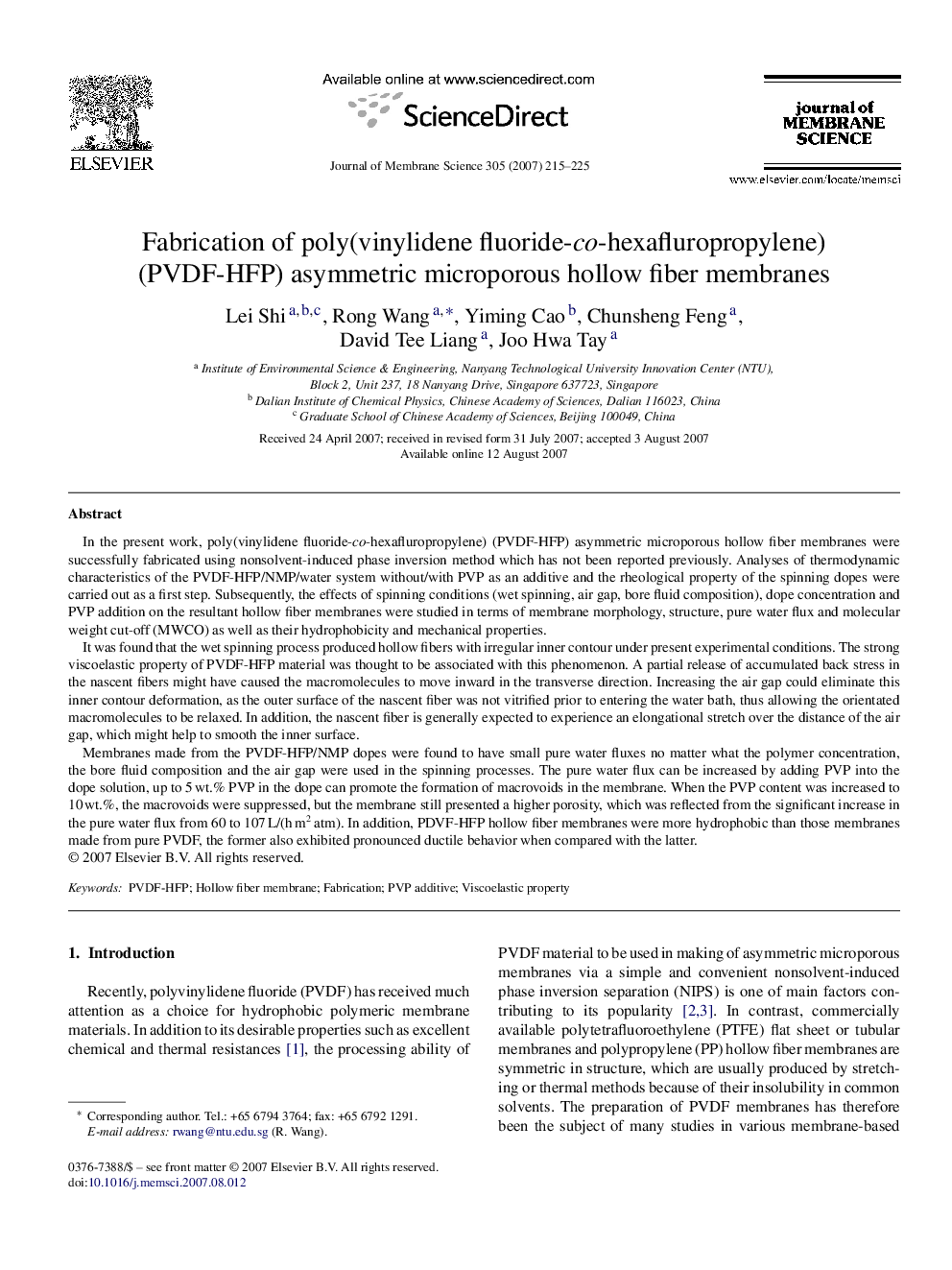| Article ID | Journal | Published Year | Pages | File Type |
|---|---|---|---|---|
| 638310 | Journal of Membrane Science | 2007 | 11 Pages |
In the present work, poly(vinylidene fluoride-co-hexafluropropylene) (PVDF-HFP) asymmetric microporous hollow fiber membranes were successfully fabricated using nonsolvent-induced phase inversion method which has not been reported previously. Analyses of thermodynamic characteristics of the PVDF-HFP/NMP/water system without/with PVP as an additive and the rheological property of the spinning dopes were carried out as a first step. Subsequently, the effects of spinning conditions (wet spinning, air gap, bore fluid composition), dope concentration and PVP addition on the resultant hollow fiber membranes were studied in terms of membrane morphology, structure, pure water flux and molecular weight cut-off (MWCO) as well as their hydrophobicity and mechanical properties.It was found that the wet spinning process produced hollow fibers with irregular inner contour under present experimental conditions. The strong viscoelastic property of PVDF-HFP material was thought to be associated with this phenomenon. A partial release of accumulated back stress in the nascent fibers might have caused the macromolecules to move inward in the transverse direction. Increasing the air gap could eliminate this inner contour deformation, as the outer surface of the nascent fiber was not vitrified prior to entering the water bath, thus allowing the orientated macromolecules to be relaxed. In addition, the nascent fiber is generally expected to experience an elongational stretch over the distance of the air gap, which might help to smooth the inner surface.Membranes made from the PVDF-HFP/NMP dopes were found to have small pure water fluxes no matter what the polymer concentration, the bore fluid composition and the air gap were used in the spinning processes. The pure water flux can be increased by adding PVP into the dope solution, up to 5 wt.% PVP in the dope can promote the formation of macrovoids in the membrane. When the PVP content was increased to 10 wt.%, the macrovoids were suppressed, but the membrane still presented a higher porosity, which was reflected from the significant increase in the pure water flux from 60 to 107 L/(h m2 atm). In addition, PDVF-HFP hollow fiber membranes were more hydrophobic than those membranes made from pure PVDF, the former also exhibited pronounced ductile behavior when compared with the latter.
